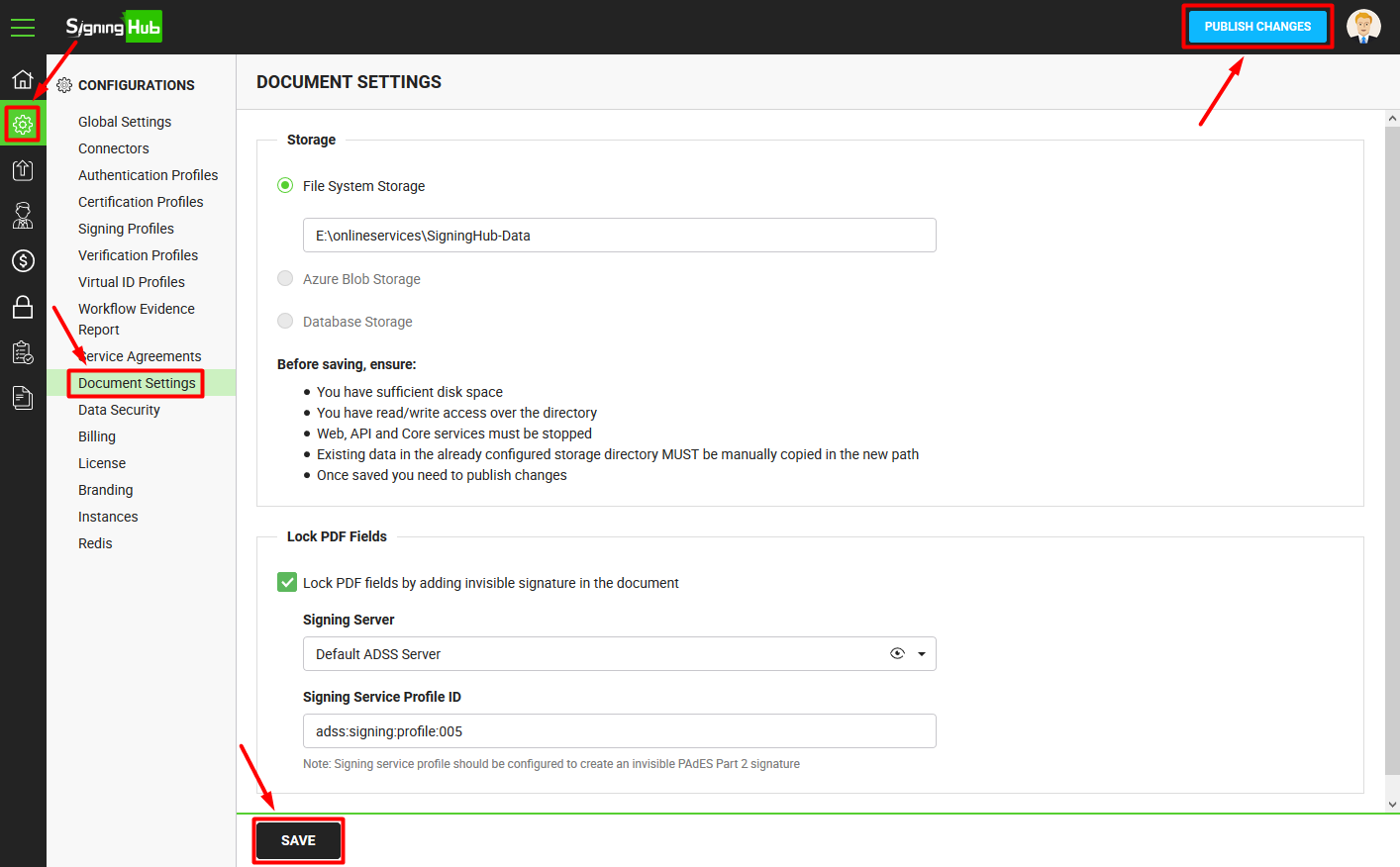SigningHub allows multiple storage areas to save the documents transactions (revisions), templates, and library files. During deployment, the SigningHub Installer gives you three different options to choose the one for saving this data in an encrypted format, i.e.:
Configure your document settings- File System Storage
- Azure Blob Storage
- Database Storage
| Document Settings | |
| Fields | Description |
|
Storage
|
|
| File System Storage |
When the "File System Storage" option is selected from the SigningHub Installer:
|
| Azure Blob Storage | When the "Azure Blob Storage" option is selected from the SigningHub Installer:
|
|
Database Storage
|
When the "Database Storage" option is selected from the SigningHub Installer:
|
|
Lock PDF Fields
|
|
| Lock PDF fields by adding invisible signature in the document | Tick this option to configure documents locking settings. For document locking, an invisible signature is added on the PDF file after the last recipient so that it cannot be amended later. A couple of fields will appear, i.e. "Signing Server" and "Signing Service Profile ID". The "Signing Server" field will display the list of ADSS Server connectors. Select the one to compute PAdES Part 2 invisible signatures for the PDF documents to be locked. Click  to view the details of the selected connector. to view the details of the selected connector.In the "Signing Server Profile ID" field, specify the ID or name of the profile that has been created in the ADSS Signing Server for invisible signatures, i.e. adss:signing:profile:001 When configured, system will be automatically lock those documents having form fields:
If you keep this option un-ticked, documents auto locking will not be triggered as per the above mentioned conditions and hence no invisible signatures will be added on the PDF documents. |
- Click the "Configurations" option from the left menu.
- Click the "Document Settings" option.
The "Document Settings" screen will appear displaying the selected storage option from the SigningHub Installer in read-only mode. See the "Document Settings" table above for fields description. - In case of File System Storage, edit the Document Storage Path as required.
In case of Azure Blob Storage, change the Azure Blob connector as required. - Set the PDFs locking configuration as required.
- Click the "Save" button.
- Click the "Publish Changes" button from the top right corner, to make these configurations effective on the front-end (SigningHub Desktop Web).

1. When you are looking to replace a local path with a network path and vice versa, then refer to the SigningHub installation guide for their configuration details.
2. When you need to configure a new path, then move all the SigningHub data manually to the new location before changing the existing path.